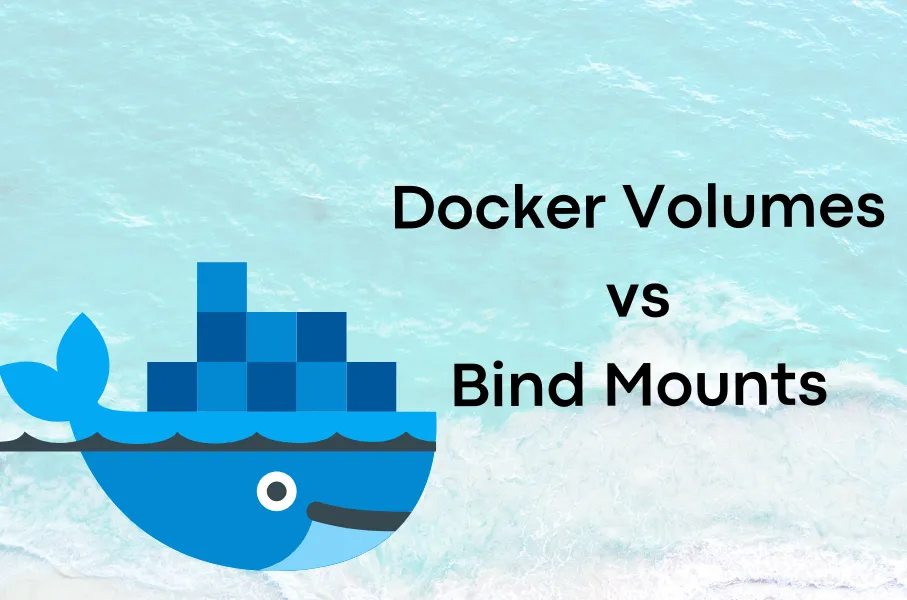☑️Day 25: Docker Volumes and Bind Mounts in Action🚀
 Kedar Pattanshetti
Kedar Pattanshetti
🔹Table of Contents :
Introduction to Docker Volumes and Bind Mounts
Task 1: Persisting MySQL Data with Docker Volumes
Task 2: Running a MySQL Container with Named Volumes
Task 3: Understanding Bind Mounts and Real-Time Synchronization
Key Takeaways
✅1. Introduction
Docker Volumes are a way to persist data across container lifecycles, while Bind Mounts allow synchronization of files between a host machine and a container. This is extremely useful when working on development projects or databases where you need to ensure data is not lost when containers are stopped or deleted.
✅2. Task 1: Persisting MySQL Data with Docker Volumes
In this task, I learned how to make MySQL data persistent by attaching volumes to the container. This ensures that even after deleting the container, the data will still be available when creating a new one.
Step-by-Step Commands:
Run the MySQL Container
First, pull the MySQL image and start the container:docker container run -itd mysql:latestCreate Databases
Once the MySQL container is running, create two databases:docker exec -it <container_id> mysql -uroot -p CREATE DATABASE db1; CREATE DATABASE db2;Inspect the Container to Locate the Volume
Use this command to inspect the container and find where the data is stored (usually/var/lib/mysql):docker container inspect <container_id>Remove the Existing Container
Once the databases are created, delete the container:docker container rm -f <container_id>Re-create the Container with Attached Volume
Now, re-create the container with the volume attached to persist the data:docker container run -itd -v <volume_id>:/var/lib/mysql mysql:latestVerify Data Persistence
Access the new container and check if the databasesdb1anddb2still exist:docker exec -it <new_container_id> mysql -uroot -p SHOW DATABASES;
✅3. Task 2: Running a MySQL Container with Named Volumes
Named volumes help simplify volume management. Here’s how I used a named volume for a MySQL container.
Step-by-Step Commands:
Run a Container with a Named Volume
Use the-voption to attach a named volume and-dto run it in detached mode:docker container run -d --name sit-mysql -v myvolume:/var/lib/mysql -e MYSQL_ALLOW_EMPTY_PASSWORD=true mysql:latestRemove a Specific Volume
When needed, you can remove a volume by its ID:docker volume rm <volume_id>Clean Up Unused Volumes
To clean up volumes that are not in use:docker volume prune
✅4. Task 3: Understanding Bind Mounts and Real-Time Synchronization
Bind mounts allow you to synchronize directories between the host machine and the container in real-time. Any changes made inside the container reflect on the host machine and vice versa.
Step-by-Step Commands:
Create a Directory on the Host
First, create a directory on your host machine and add a file:mkdir /bind echo "Hello Bind Mount" > /bind/index.htmlRun a Container with a Bind Mount
Bind the host directory/bindto/tmp/testinside the container:docker container run -d --name sync-container -v /bind:/tmp/test ubuntu:latestVerify the Bind Mount in the Container
Inside the container, list the files to verify the bind mount:docker exec -it sync-container ls -lrth /tmp/testView the Contents Inside the Container
Check if the file from the host is available inside the container:docker exec -it sync-container cat /tmp/test/index.htmlCreate a File Inside the Container
Now, create a file inside the container. This file will be synchronized with the host machine:docker exec -it sync-container echo "Hello from Container" > /tmp/test/test.txtVerify the File on the Host Machine
On the host machine, check if the file was created in/bind:cat /bind/test.txt
✅5. Key Takeaways
Volumes allow containers to store data independently of the container lifecycle, which is essential for databases like MySQL.
Bind Mounts provide real-time synchronization between host and container directories, making development and testing smoother.
Both volumes and bind mounts are critical for maintaining data consistency and enabling efficient collaboration between developers.
🚀Thanks for joining me on Day 25! Let’s keep learning and growing together!
Happy Learning! 😊
#90DaysOfDevOps
#Docker #DevOpsJourney #ContinuousLearning #Day25 #DockerVolume #Volume #BindMount #BackupAndRestore #ShubhamLonde
Subscribe to my newsletter
Read articles from Kedar Pattanshetti directly inside your inbox. Subscribe to the newsletter, and don't miss out.
Written by
